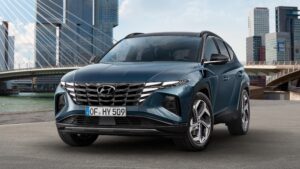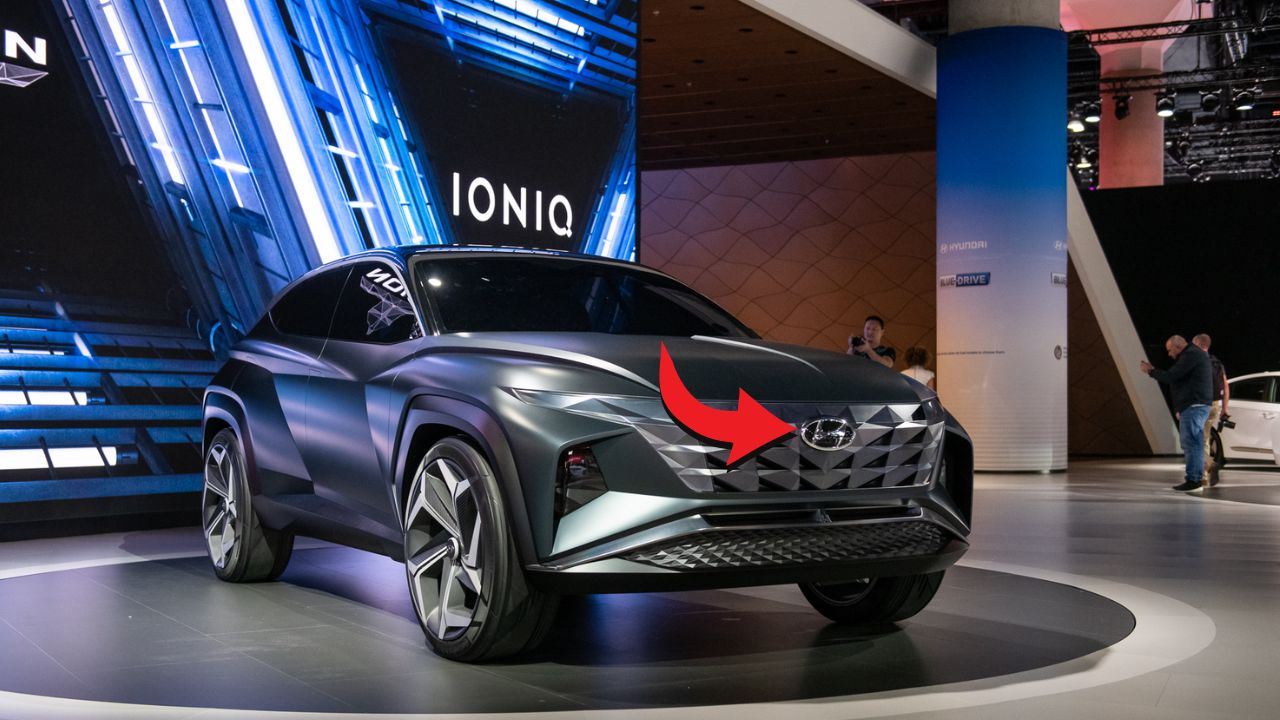The Hyundai Tucson has solidified its place as one of Australia’s top-selling mid-size SUVs, with its bold design, advanced technology, and versatile powertrains making it a fierce competitor to the Toyota RAV4 and Mazda CX-5. In May 2025, the Tucson was among the top 10 vehicles sold in Australia, moving 2,347 units, according to FCAI data. While its striking Parametric Jewel Hidden Lights, spacious cabin, and hybrid efficiency (5.3L/100km for the hybrid model) are well-publicized, the 2025 Hyundai Tucson hides some lesser-known features that enhance its appeal for Aussie drivers. This article uncovers two hidden gems—the Remote Smart Parking Assist (RSPA) and the Rear Occupant Alert (ROA) with advanced monitoring—that many Australians are yet to discover, exploring how they elevate the Tucson’s practicality and safety for urban commuters, families, and regional adventurers. We’ll also compare these features to competitors and assess their value in the Australian market.
Remote Smart Parking Assist (RSPA)
The first hidden feature of the 2025 Hyundai Tucson is its Remote Smart Parking Assist (RSPA), a cutting-edge system that allows drivers to park or maneuver the vehicle in tight spaces without being inside it. Available on the Premium and Limited trims (starting at $47,100 and $53,100 before on-road costs, respectively), RSPA uses a network of cameras, radar, and ultrasonic sensors to execute parallel or perpendicular parking with precision. Drivers can activate RSPA via the smart key fob, standing up to 4 meters away, to guide the Tucson into or out of a parking spot at speeds up to 2km/h. This feature is particularly useful in Australia’s crowded urban centers like Sydney and Melbourne, where tight parking spaces in multi-storey carparks or narrow streets are common.
How RSPA Works
RSPA operates in two modes: Remote Forward/Reverse and Remote Parking. In Remote Forward/Reverse, the driver uses the fob’s forward or reverse buttons to move the Tucson in a straight line, ideal for squeezing out of tight spaces where doors can’t be opened fully. For Remote Parking, the system scans for a suitable parking spot, displays a prompt on the 12.3-inch touchscreen, and executes the maneuver once the driver initiates it via the fob. The Tucson’s sensors detect obstacles, automatically braking if a pedestrian or vehicle approaches. The system supports both parallel (e.g., street parking) and perpendicular (e.g., shopping center bays) configurations, with a 360-degree Surround View Monitor (SVM) providing visual feedback on the driver’s smartphone via Hyundai Bluelink (standard with a three-year subscription).
Why It’s a Game-Changer for Aussies
In Australia, where 68% of the population lives in major cities (ABS, 2023), parking challenges are a daily reality. RSPA simplifies parking in tight spaces, reducing stress for drivers navigating busy areas like Bondi or St Kilda. For families, it’s a boon when loading prams or groceries in cramped lots, as parents can exit the vehicle and maneuver it remotely, avoiding awkward door dings. Regional buyers, who often face narrow driveways or farm gates, benefit from RSPA’s ability to inch the Tucson through confined spaces. Unlike competitors like the Toyota RAV4 ($42,260–$58,360), which lacks a comparable remote parking feature, the Tucson’s RSPA offers a premium convenience typically found in luxury brands like BMW or Mercedes-Benz.
Comparison to Rivals
The Kia Sportage, the Tucson’s sibling, offers a similar Remote Parking Assist on its GT-Line trim ($52,600), but its implementation is less refined, with a shorter control range (3 meters). The Mazda CX-5 ($39,990–$56,590) and Nissan X-Trail ($37,250–$57,690) rely on semi-autonomous parking aids requiring the driver to remain inside, limiting their flexibility. The Tucson’s RSPA, combined with its five-star ANCAP rating and Bluelink connectivity, gives it an edge for tech-savvy Aussies. However, the feature’s absence on base ($39,100) and Elite ($43,100) trims may disappoint budget-conscious buyers, as it’s exclusive to higher grades. X posts praise RSPA’s “futuristic vibe,” though some note its learning curve, requiring practice to master.
Rear Occupant Alert (ROA) with Advanced Monitoring
The second hidden feature is the Tucson’s Rear Occupant Alert (ROA) system with advanced monitoring, a safety feature designed to prevent children or pets from being left in the vehicle. Standard on all 2025 Tucson models, ROA uses ultrasonic sensors to detect movement in the rear seats after the vehicle is locked. If motion is detected, the system sounds the horn, flashes the lights, and sends an alert to the driver’s smartphone via Hyundai Bluelink. For Premium and Limited trims, ROA is enhanced with door-logic sensors that activate if rear doors are opened before or during a trip, ensuring the driver is prompted to check the back seat even without motion detection.
How ROA Works
ROA operates in two stages. First, when the driver exits and locks the Tucson, a dashboard message reminds them to check the rear seats. If the system detects movement (e.g., a sleeping child or pet) within 10 minutes, it triggers audible and visual alerts for up to 25 seconds. The Bluelink app sends a push notification, critical for distracted parents or carers. The advanced version, on higher trims, uses door-opening history to assume a passenger may be present, displaying a warning even if no motion is detected. This dual approach addresses scenarios where a child may be asleep or still, a feature not explicitly detailed in most Tucson marketing materials.
Why It’s Vital for Australians
Australia’s hot climate, with summer temperatures often exceeding 35°C, makes ROA a lifesaving feature. The Royal Life Saving Society Australia reported 7,000 child hot-car incidents annually, with tragic outcomes in extreme cases. ROA’s proactive alerts help prevent such incidents, offering peace of mind for parents, grandparents, or pet owners. For regional drivers, who may leave vehicles unattended on properties or at remote rest stops, ROA ensures no one is forgotten. The system’s integration with Bluelink allows remote monitoring, a boon for busy Aussies juggling work and family.
Comparison to Rivals
The Toyota RAV4 lacks a comparable rear occupant alert, relying on basic door-open warnings without sensor-based detection. The Kia Sportage offers a similar ROA system but limits smartphone alerts to its top GT-Line trim. The Mazda CX-5 and Nissan X-Trail have no equivalent, relying on manual checks or basic chimes. The Tucson’s standard inclusion of ROA across all trims, with advanced features on higher grades, sets it apart in the mid-size SUV segment. Its five-star ANCAP rating (2021, updated 2024) is bolstered by this feature, making it a top choice for safety-conscious families.

Why These Features Are Hidden
Despite their value, RSPA and ROA remain under the radar for many Australian buyers. Hyundai’s marketing emphasizes the Tucson’s Parametric Jewel Hidden Lights, 12.3-inch dual screens, and hybrid efficiency (5.3L/100km vs. Camry’s 3.5L/100km), overshadowing these practical technologies. The owner’s manual (available at MyHyundai) buries details on RSPA and ROA in fine print, and dealerships often focus on visible features like the N Line’s 19-inch wheels or Krell audio system. Forums like tucson-forum.com reveal owners discovering these features post-purchase, with one user noting, “I had no idea about the remote parking until I saw it on YouTube!” (tucson-forum.com, 2024). Hyundai’s Bluelink classes, offered at select dealers, aim to educate owners, but uptake is low.
Tucson’s Place in the Australian Market
The 2025 Tucson, priced from $39,100 to $61,100, offers petrol (2.0L, 115kW, 8.1L/100km), turbo-petrol (1.6L, 132kW, 7.2L/100km), and hybrid (1.6L, 169kW, 5.3L/100km) powertrains, with a plug-in hybrid (PHEV, 195kW, 43km electric range) available on N Line and Limited trims. Its 539L boot, expandable to 1,903L, rivals the RAV4’s 580L, while its 1,900kg towing capacity suits weekend adventurers. The Tucson’s Australian-tuned suspension (though less localized since 2024) handles urban and rural roads well, with a firmer ride than the RAV4 but better insulation than the CX-5, per Drive.com.au. Standard features include wireless Apple CarPlay/Android Auto, a 12.3-inch touchscreen, and a five-year unlimited-kilometre warranty, outpacing Toyota’s five-year offering but trailing Kia’s seven years.
The Tucson’s hidden features enhance its appeal in a competitive segment. RSPA caters to urban drivers facing parking woes, while ROA addresses Australia’s safety concerns, particularly in hot climates. Compared to the RAV4 ($42,260, 4.7L/100km hybrid) and CX-5 ($39,990, 7.2L/100km petrol), the Tucson’s tech edge and safety focus make it a strong contender, though its base 2.0L engine lacks the hybrid’s pep. X posts highlight the Tucson’s “futuristic gadgets” but note its higher price compared to Chinese rivals like the Geely EX5 ($40,990). With Hyundai’s growing dealer network (over 200 locations), the Tucson is accessible, but buyers must opt for Premium or Limited trims to unlock RSPA’s full potential.
Looking Ahead
The 2025 Hyundai Tucson’s Remote Smart Parking Assist and Rear Occupant Alert with advanced monitoring are hidden gems that elevate its practicality and safety for Australian drivers. RSPA simplifies urban parking, a boon for city dwellers, while ROA’s life-saving alerts protect families and pets in Australia’s harsh climate. These features, often overlooked in favor of the Tucson’s bold styling and hybrid efficiency, set it apart from rivals like the Toyota RAV4 and Mazda CX-5. As Australia’s SUV market grows (41% of May 2025 sales, FCAI), the Tucson’s tech-forward approach and five-star ANCAP rating make it a compelling choice. To explore these features, visit www.hyundai.com.au or book a test drive at a local dealer.
FAQs
1. How does the Remote Smart Parking Assist (RSPA) work on the 2025 Hyundai Tucson?
RSPA allows drivers to park or maneuver the Tucson remotely using the smart key fob from up to 4 meters away. It uses cameras, radar, and ultrasonic sensors to execute parallel or perpendicular parking, with the system automatically braking for obstacles. Available on Premium and Limited trims, it’s controlled via the fob or Hyundai Bluelink app.
2. What makes the Rear Occupant Alert (ROA) system in the Tucson unique?
ROA uses ultrasonic sensors to detect movement in the rear seats after the vehicle is locked, sounding the horn and sending Bluelink alerts if a child or pet is detected. Premium and Limited trims add door-logic sensors, prompting checks if rear doors were opened, enhancing safety even without motion.
3. Are these hidden features available on all 2025 Hyundai Tucson models in Australia?
ROA is standard across all trims (base, Elite, Premium, Limited, N Line), but RSPA is exclusive to Premium ($47,100) and Limited ($53,100) trims. Buyers of base ($39,100) or Elite ($43,100) models miss out on RSPA but still benefit from ROA’s safety features.
